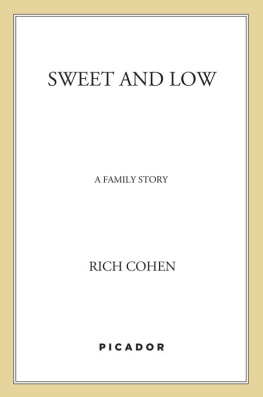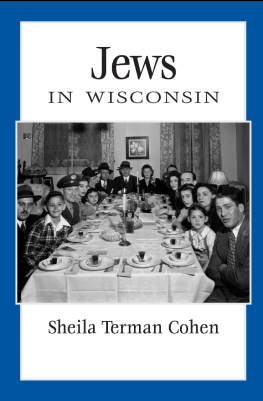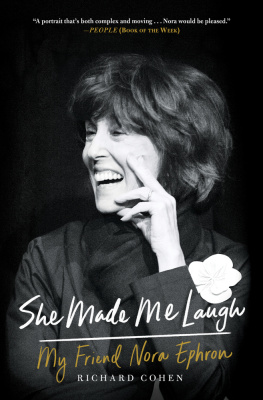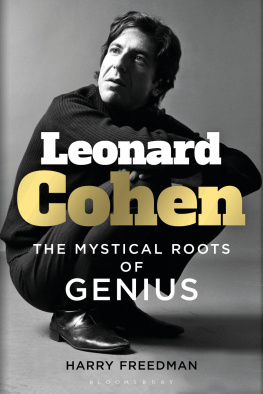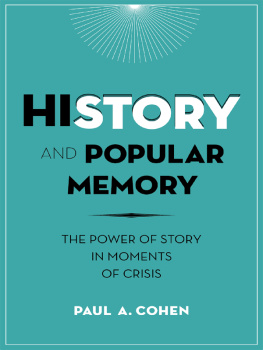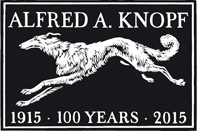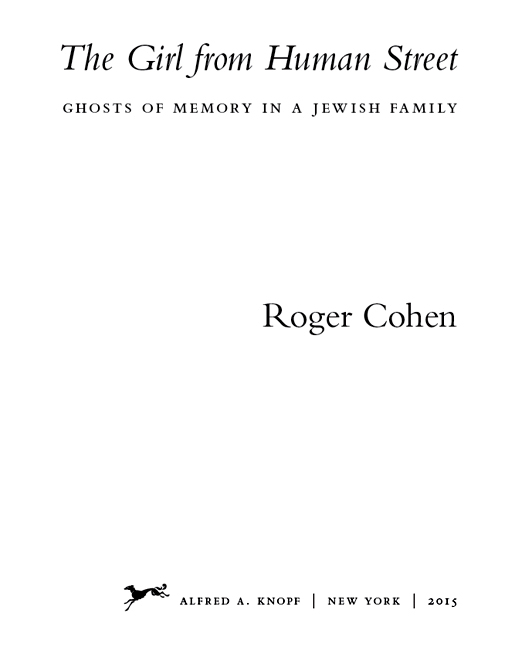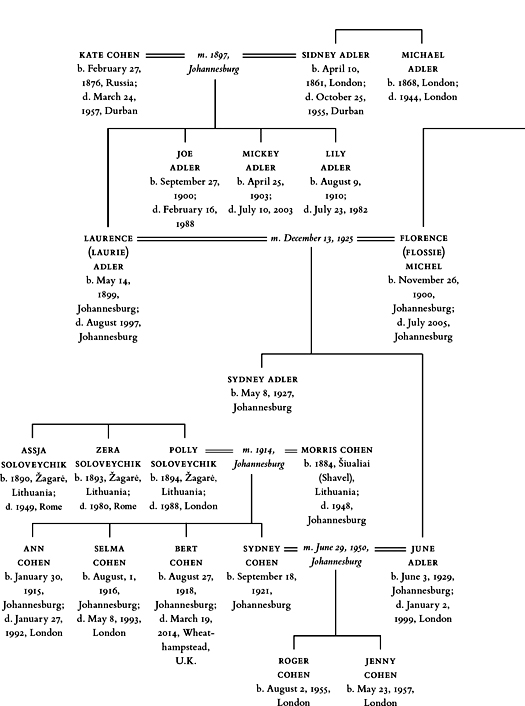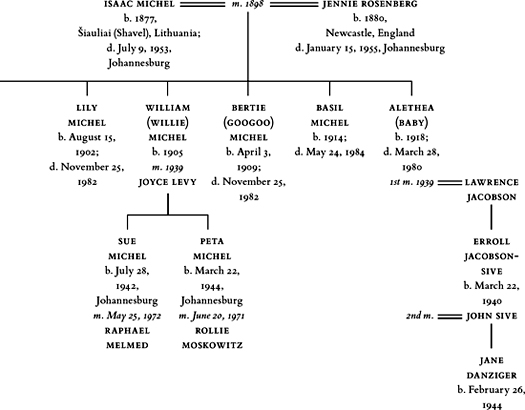ALSO BY ROGER COHEN
Soldiers and Slaves:
American POWs Trapped by the Nazis Final Gamble
Hearts Grown Brutal:
Sagas of Sarajevo
In the Eye of the Storm:
The Life of General H. Norman Schwarzkopf (with Claudio Gatti)
THIS IS A BORZOI BOOK
PUBLISHED BY ALFRED A. KNOPF
Copyright 2015 by Roger Cohen
All rights reserved. Published in the United States by Alfred A. Knopf, a division of Random House LLC, New York, and distributed in Canada by Random House of Canada Limited, Toronto, Penguin Random House companies.
www.aaknopf.com
Knopf, Borzoi Books, and the colophon are registered trademarks of Random House LLC.
Grateful acknowledgment is made to Graywolf Press and Mary Szybist for permission to reprint an excerpt from Another True Story from Incarnadine: Poems by Mary Szybist, copyright 2013 by Mary Szybist. All rights reserved. Reprinted by permission of the author and Graywolf Press. www.graywolfpress.org.
Library of Congress Cataloging-in-Publication Data
Cohen, Roger.
The girl from Human Street : ghosts of memory in a Jewish family / Roger Cohen.
First edition.
pages cm
A Borzoi Book.
Includes bibliographical references.
ISBN 978-0-307-59466-2 (hardcover) ISBN 978-0-385-35313-7 (eBook)
1. Cohen, RogerFamily. 2. JewsLithuaniaBiography.
3. Holocaust, Jewish (19391945)LithuaniaBiography. I. Title.
DS 135. L 53 L 54 2014
940.531809275791 AB 757912 23
2014017900
Jacket images courtesy of the author
Jacket design by Abby Weintraub
All photographs courtesy of the authors family unless otherwise indicated.
v3.1
For my father, Sydney Cohen
And to the memory of my mother, June
Its a poor sort of memory that only works backwards.
LEWIS CARROLL , Through the Looking Glass
Set your flag at half mast,
memory.
At half mast
today and for ever.
PAUL CELAN , Shibboleth
When people go to Johannesburg, they do not come back.
ALAN PATON , Cry, the Beloved Country
Contents
Family Tree
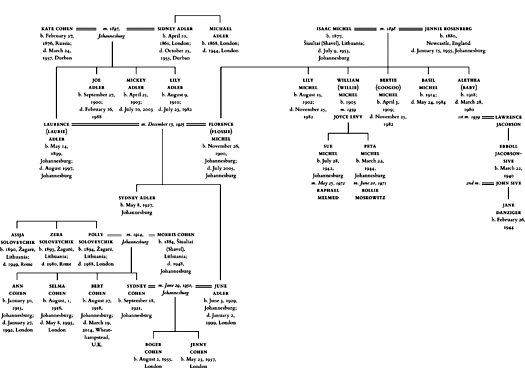
To view a full-size version of this image, click HERE.
CHAPTER 1
Circle of Disquiet
The promontory of Bellagio tapers to the Punta Spartivento, the point where the wind divides. I stand at its tip watching bright cumulus clouds puff over the ridges into a still blue Italian sky. Ferries of unromantic doggedness plow their zigzag white furrows across the water. Cypresses, aligned like sentries, cast their shade over shuttered villas of pale pink and ocher. I look north to Dongo, where Mussolini was captured, and beyond to the snowcapped peaks where Italians by the tens of thousands starved above the tree line during World War I. To the southeast lies Lecco, and to the southwest, Como. The water is clear and the peace abundant at the confluence of the three-limbed lake. Europe has long since quieted itself after its suicidal convulsions. Not a breath of wind stirs at the division of the winds.
Yet I find myself uneasy. Calm surrounds me but eludes me. A journalists life is agitation. What brings me of a sleepy afternoon to a place where the bells of Bellagio toll the hours and the half hours is a whispered admonition: Stop! I have grown suspicious that all the running in my peripatetic life might not have been toward something but away from something. Stillness feels like the most dangerous state of all.
My life has been spent crossing lines, gazing at the same picture from different angles in order to evoke it. The journalist moves in the opposite direction from the crowd, toward danger, often leaving the settled majority perplexed. Why, people ask, do you do that? In search of a fair understanding, you say, and they shake their heads. There is nothing to understand, they insist, just write the truth!
But truths are many, and that is the problem. Memory is treacherous, as distinct from history as emotion from form. Every war is fought over memory. Violent nationalism is revived memory manipulated as revealed truth.
Conflict is incubated in the contested truths the past bequeaths. Questions swirl: Who came first to the land? Who planted the millennial olive trees? Who killed whom first? Does the church predate the mosque? What of the synagogue that may precede them both? The slaughter on that dusty plain where skulls were piled has never been avenged nor set on the scales of justice. As for the rape of the daughters of the house, it will not be forgiven until the last tree withers.
Identities are assembled piece by piece. Each drop of blood shed, each shrapnel scar on a wall, each land grab, is annotated in the Book of Unforgiving. In the Middle East, the events of a thousand years past can seem as vivid as yesterdays, their poison undiluted. The enemy imperatives of Arab and Jew demand that memory, like the fuse for a bomb, be shaped for maximum explosive effect. Truces last no longer than a cheap umbrella in a storm.
The river of discord runs on. Its tributaries are fed by the fashioning of myth. So, with reluctance, I have concluded that the only truth I can know is my own. However small, it is mine. Being a Jewish story of the twentieth century, it bears upon migration and displacement and suicide and persecution and assimilation. It also recounts bravery, a passionate quest for learning, obstinate love, and the pursuit of beauty. From Lithuania and then South Africa, the family path winds on through Britain to Israel and the United States. Joseph Brodsky wrote: If there is any substitute for love, its memory. To memorize, then, is to restore intimacy. The restoration of intimacy is more than an act of love; it is an attempt, by writing down a lost world before it dissolves, to bring memory closer to truth.
It has taken me a long time to piece all this together. Memories come not like heavy rain but like the drops falling from leaves after it. There were elements missing. At last I knew I would not be whole until I found them.

On May 7, 1945, my uncle, Capt. Bert Cohen of the Dental Unit of the Sixth South African Armored Division, Nineteenth Field Ambulance, made the following entry in his war diary:
After lunch Hilton Barber lent me his jeep and I scudded away on a delightful jaunt. We traveled through twisting country byways until the town of Monza. There we followed route 36 northward to Lecco. As we bypassed the town we got our first view of the famous Alpine lakes an azure strip of unbelievable blue flanked by great mountains. We passed through several icy tunnels and the beauty of the scene grew more breathtaking as we neared Bellagio, a wonderful village nestling in the fork of the lake beneath the majestic mountains. A drove of little boys clambered onto the jeep, an incredible number appeared from all over the place. At one stage Wilson counted 21 of them on the jeep. Bellagio was indeed delightful. It was while there that we heard that the war was over, a report that was subsequently verified as we drove on down Lake Como to Como. All along the road from Bellagio throngs had lined each village street and flowers in profusion had been tossed into the jeep.



